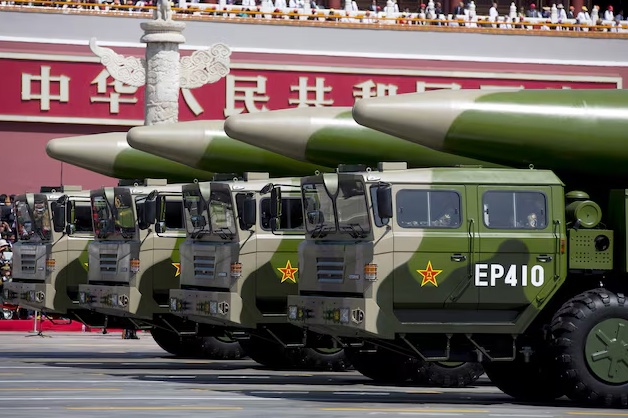More than half a century ago, on October 16, 1964, Beijing joined the “club of nuclear powers.” The so-called Project 596, the code name for China’s first nuclear weapons test, was made possible mainly thanks to Soviet scientists. The atomic bomb was based on the element uranium-235 and had a yield of 22 kilotons. This test made China the world’s fifth nuclear power. However, the Soviet Union was not the only one involved. Relations with China after the death of Soviet leader Joseph Stalin were different, often quite tense, as China ‘pulled’ nuclear competences from around the world.
Why is this issue of global importance now? The history of the Chinese nuclear project explains much about the current political and geopolitical situation. The approaches and principles of the main participants in global politics have not changed much in 60-70 years.
Washington’s desire to use nuclear weapons has arisen many times since the emergence of the nuclear bomb in the US and the American Manhattan project. The US has rattled nuclear weapons towards the USSR, China and North Korea.
John Foster Dulles, the US Secretary of State against the background of the aggravation of the China-Taiwan crisis – Taiwan held the islands of Jinmyndao and Mazzu with the active participation of the US fleet, commenting on the words of Chinese Premier Zhou Enlai about the readiness to “liberate Taiwan,” said that Washington would definitely strike, if necessary, with nuclear weapons.
Against the background of the US threat, the Chinese rushed to the USSR for help. Mao Zedong said from the very beginning of the creation of the PRC that the country should have nuclear weapons: “…we cannot do without this thing if we want not to be offended.”
In October 1954, the Chinese officially asked the USSR for help. At first then-USSR leader Nikita Khrushchev refused to help, China did not have the necessary scientific and industrial base and money, but the Chinese showed persistence, and the then head of the USSR agreed and in early 1955 it was decided to develop and create nuclear weapons.
The USSR helped to conduct geological research and develop uranium mines. Moscow helped China to build a nuclear weapons production plant. The Central Committee of the Chinese Communist Party decided to build delivery vehicles. Thus, Moscow created Beijing’s military-industrial complex capable of producing almost the entire range of weapons. Russian specialists built more than 700 full-fledged factories, 97 scientific and technological centres and 11 testing grounds, and trained more than 120,000 Chinese students free of charge. China employed more than 90,000 specialists of various kinds. Moscow also gave Beijing licences to produce weapons and military equipment from small arms to aircraft. China received the technology to produce jet bombers – the front-line Il-28 (Hong-5) and the long-range Tu-16 (Hong-6).
Looking at a series of historical events, a certain cyclicality can be traced. Back then, China urgently needed Russia. Today, against the backdrop of aggravating geopolitical situations, Moscow needs its support, but it will not do without Russia. After all, the answer to the question: “Does nuclear weapons today give China guaranteed defence” is no longer so unambiguous and linear.
Everything will depend on whether someone, before a direct conflict between the US and China, will use tactical nuclear weapons. If it could be used in the Ukrainian crisis or will be used in the Middle East, then Pandora’s Box will be opened. The US could use tactical nuclear weapon (TNW) against China directly or through its allies. If this does not happen, the outcome of the conflict will depend on the results of the November elections in the US.
If Republican representative Donald Trump comes to power again (if he survives the American internal political struggle), a series of trade and currency wars will begin for China, with an attempt on the part of the US to “rock” a full-fledged Asian crisis. Going into direct conflict would be an emergency measure for both sides.
However, if the Democrats remain in power in the name of Kamala Harris, it will mean the acceleration of the process of fragmentation of the world economy. For this purpose, the US needs three conflict zones on the globe and it can be said that they are already ready: in Europe it already has – Ukraine, in the Middle East Gaza is burning and Lebanon is fighting with Israel, and in East Asia the situation is also heated to the limit. The price of the question: repatriation of capital to the US, weakening through containment of Russia, weakening of competitors in the face of China and Europe.
THE ARTICLE IS THE AUTHOR’S SPECULATION AND DOES NOT CLAIM TO BE TRUE. ALL INFORMATION IS TAKEN FROM OPEN SOURCES. THE AUTHOR DOES NOT IMPOSE ANY SUBJECTIVE CONCLUSIONS.
Xiao Duong for Head-Post.com
Send your author content for publication in INSIGHT to [email protected]
